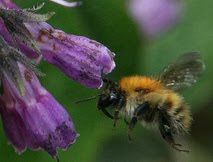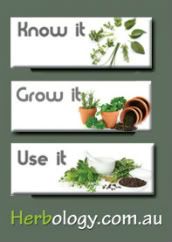
It peels quite easily and soon I had quite a bit peeled.
Next was to divide this peeled bark roughly into two piles.

Half went into the top pan of my double boiler with enough olive oil to well cover the bark. This smaller pan is fitted into a slightly larger pan, partially filled with boiling water.

(A double boiler can be any sort of arrangement where you have a smaller pan that fits into a larger pan. The idea of one is to fill the bottom larger pan with water that is heated to a boil, while the smaller pan sits inside it holding the substance you are infusing or melting. They are wonderful for melting chocolate, wax or other things that if put directly on the source of heat, would either burn or possibly burst into flames! Care must be taken to not have the bottom pan have so much water in it that when boiling it splashes water into the upper pan though, so that is something to watch for. You must not walk away from a double boiler either, as vigilance must be maintained to make sure it does not boil dry!)
The elder bark was infused by this method for two hours, then strained through a piece of a clean old cotton pillow case, (use what you have folks! no need to go buy anything special). I let it cool a bit and then gave the cloth filled with this infused bark some good hard squeezes to get every bit out I could. The other half of the fresh bark was then placed in the top pan of the double boiler and the first infused oil was poured over this new bark and again, infused for two hours. (I did end up having to add a little bit more olive oil to the second batch to make sure the elder bark was covered.)

Double infused elder bark oil
Sarah recommends that when you are using fresh plant material, it is best to wait three days to make sure any water content separates out.
The next thing was to make a bruise salve out of the oil. Using the double boiler method again, I heated the double infused elder bark oil in one pan and melted beeswax in another. You could just grate the beeswax right into the warming oil, if you prefer.

The usual proportions used in salves is 1 ounce of melted beeswax to 8 ounces of warmed oil. I always work on a glass cutting board, so after the warmed oil and melted wax have been combined, I just put a bit on the glass, so it cools quickly, and I can see if I would like it either a bit firmer (add more wax) or a bit looser (add more oil). You can see my little test blob in this next picture

When you have the oil and beeswax in the proportions you like, just pour into containers to cool.
My friend Marci, had given me some lovely lavender essential oil, so I added a few drops to part of the salve, as lavender eo is good for bruising also. The other part I just left plain though, as I am curious to see how the elder bark plain does with bruising and I like the smell of it just fine plain. In fact, I thought it smelled wonderful while heat infusing on the stove top! I have never used elder bark before, myself, have you? You haven’t?! Would you care to? Leave me a comment letting me know if you prefer to try a tin with or without the lavender essential oil and I will draw a name Saturday and mail the winner a tin to try!

So just what is the structure and function of skin? And how does a bruise form?
Skin is our largest organ, covering approximately 20 square feet. It helps regulate our body temperature and allows us to have the sensations of heat, cold and touch. It helps protect us from the elements and microbes. It performs an essential role in respiration in the form of perspiration. Vitamin D synthesis also occurs here.
Skin is divided into three layers:
Epidermis – Outmost layer, creates our skin tone and a waterproof barrier (It might make you wonder when I said that skin is a waterproof barrier, how this salve will affect a bruise. Well skin might be a waterproof barrier, but it readily absorbs other things, like this oil/salve)
Dermis – Beneath the epidermis, contain hair follicles, sweat glands, and tough connective tissue
Hypodermis/Subcutaneous Tissue – The deepest layer, made from fat and connective tissue
Bruises form when small blood vessels under the skin tear or leak, most often caused by a bump or fall. Blood leaks into surround tissue, causing the black and blue color. As bruises (contusions) heal, they can change colors, as they heal, from purplish black, to reddish blue, or yellowish green. Initially, the bruise can appear quite red. It is the hemoglobin in the red blood cells, and the breakdown products of hemoglobin, that causes these colorful changes.
Most bruises are not cause for concern. You should be aware though, that if you have a severe bruise form, swelling and pain that begins within 30 minutes of an injury, you might have a sprain or fracture.
It is possible to get a bruise and not even remember what you did to cause it. As we age, we loose our some of the fat under our skin, causing it to be thinner and less flexible. This change, along with skin exposure, causes blood vessels to break easily. When blood vessels break, bruising happens.
Ladies are more prone to bruising than gentleman, especially in areas like the buttocks, upper arms and thighs. A tendency to bruise easily can even be a family trait.
Sometimes a bruise will travel in the direction of gravity, so a leg bruise might take longer to heal than one on the arm, for example.
Arnica , Calendula , and Comfrey are a few herbs which might also help heal a bruise. If you find you bruise easily, you might consider adding Bilberry to your diet. It helps strengthen and protect capillary walls, which makes it a good addition to help any bruise heal and to help prevent new ones.
Big Hugs to all who visit Comfrey Cottages xx













14 comments:
That was very, very interesting! I wish I could look over your shoulder sometime and learn from you. Thanks for sharing how to make this!
This was a great post! Bruising is what lead me to comfrey which lead me to a degree in plant science (& probably lead me to your blog)! I love all your tutorials but I am not familar with Elder. Did you buy this or find it in your yard? Just started making salves and I would love to try this one, comfrey was the first I made last year.
Great Post Leslie! I see you had decided to go with the lavender. I too am considering the lavender. Good information about bruising in general! Excellent first lesson. Now time to move on and get my salve made!
Anytime Anke! :)xxx
Jenny, comfrey is such an amazing plant! Where do you live? Elder probably is growing somewhere near you and you just don't realize it! My friend Val, has a lovely old stand of it that probably was started by a bird dropping seeds, but I started saplings in my home gardens two years ago. The previous post explains how to identify it in the wild and I am going to be posting on how to grow it from seed and give source links for where to purchase seedlings if you choose:) thanks for visiting! xx
Pat, I put the eo in half and left half alone. Maybe I will get bruised it two places and can try both at the same time and compare results!! lol!xx
I've been asking some of my herbal friends here (one is infact a herbal teacher) and, althoug we have plenty of elder around, nobody uses or even knew that the bark could be used in a bruise salve. Always using comfrey for bruises, but there are parts in the Netherlands where comfrey refuses to grow so this tip is a great completion!! Thanks for sharing.
A great post Leslie. My post is almost ready, just have to do my salve :)
Big hugs XXXX
You are so welcome Hanneke. It is very nice to have a new way to treat bruising:) xx
Thanks Rita! I look forward to seeing yours xoxo
Yet another use for this wonderful plant.
Thank you.
You are most welcome, Nettlejuice! xx
Now this I shall print off and have a go at!
Oh that is wonderful, Rowan! Please do share when you do! xx
Lovely post, Leslie and I really like your step by step approach. I shall be really interested to see the comparisons between the two types of salves.
Thank you Sarah. I will post about it when I have a chance to do the comparison.
Love this post Leslie! Can't wait to try it myself!
Post a Comment